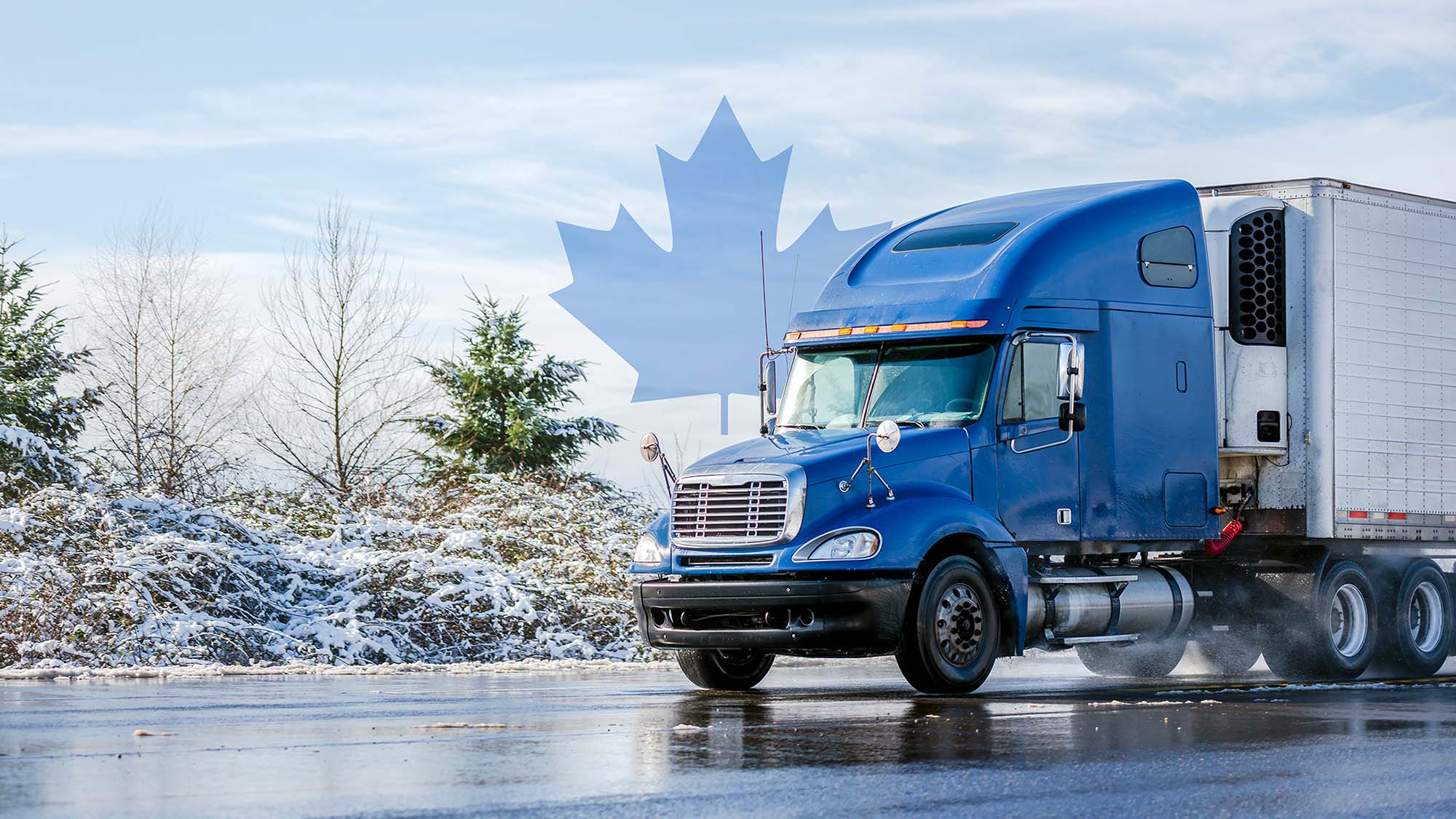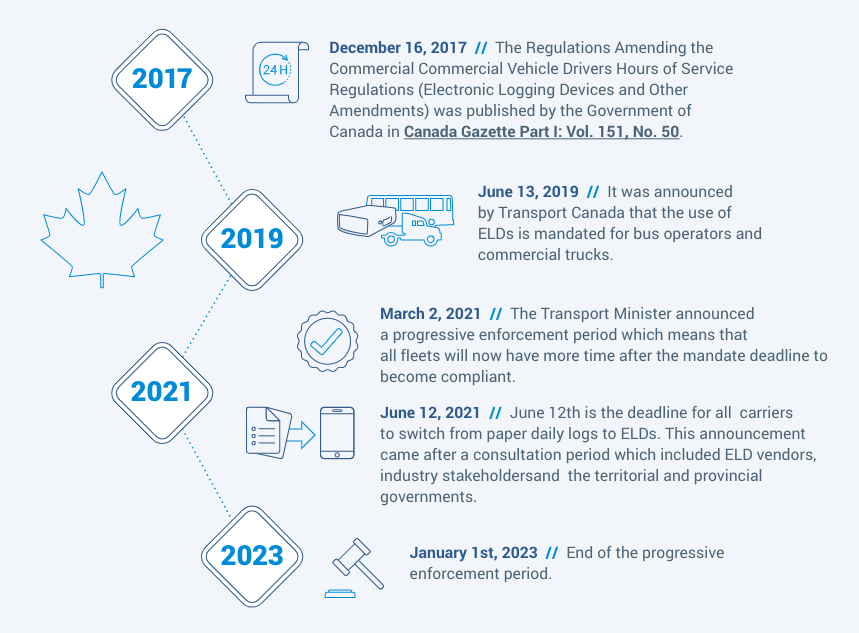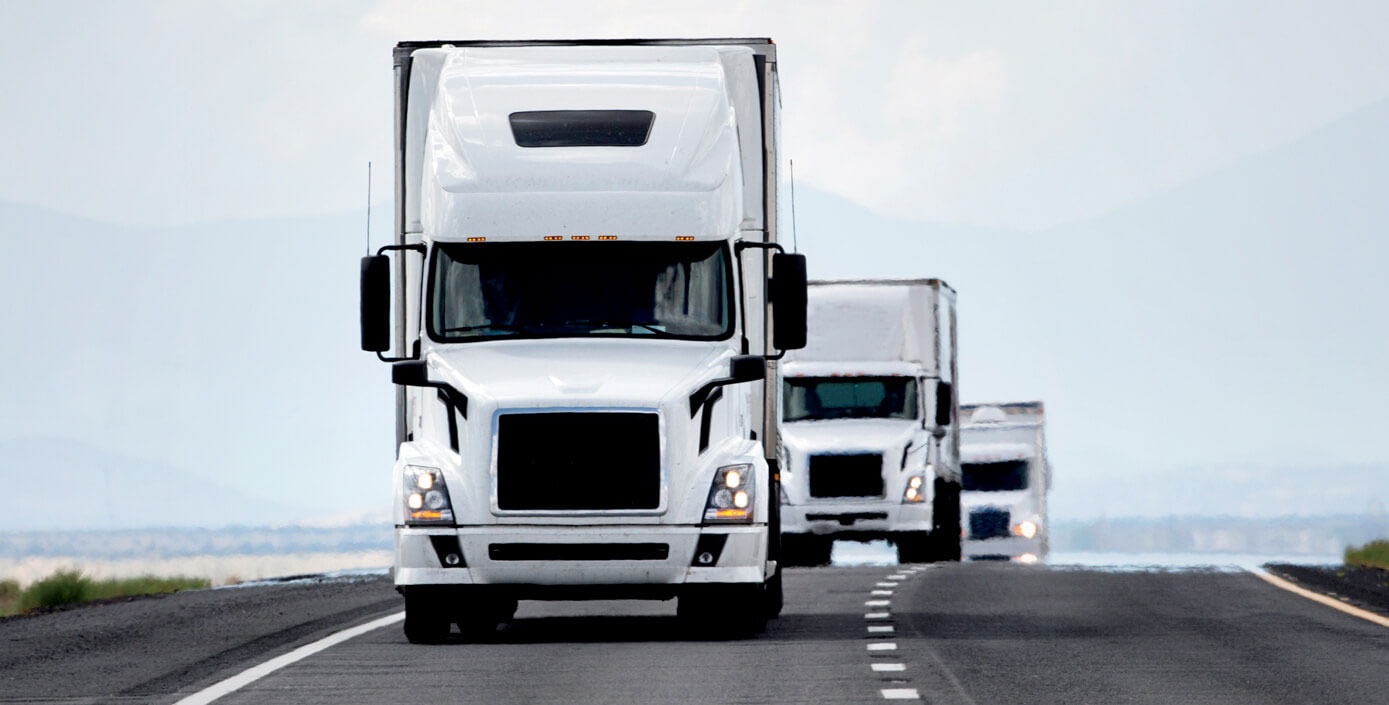
Your comprehensive guide to the Canadian ELD mandate

Table of Contents
Finding the right ELD provider is a critical task that can either help your business save time and money or add further stress. With the enforcement deadline coming up in 2023, all fleets need to invest to become ELD compliant. In this case, it is better to invest in a solution that will grow with you and provide more value in the long run.
Electronic logging will also give you access to various data including location, vehicle miles and engine hours all in addition to collecting records of duty status. The right telematics solution can also help you leverage this data and improve your business by capturing further insights such as speed, fuel usage, hard braking emission, odometer and much more.
Read on and take a deep dive into what fleets need to know to make the best ELD investment.
ELD background: Is it mandatory?
ELDs are defined by Transport Canada as a device or technology that is certified and automatically logs the driver’s record of duty status and driving time. There have been many benefits cited in the announcement to using ELDs. A few of them include:
- Reducing car incidents and improving road safety
- Making the administration and enforcement checks simpler and faster
- Minimizing driver fatigue
- Supporting economic growth by creating regulations
Now to answer the question, is an ELD mandatory? Drivers of trucks and commercial buses at the moment are required to self-report. This includes their off-duty, on-duty and daily driving time. They must keep a daily log of their driving records and use an electronic recording device (ERD) or paper logs to record their hours of service (HOS), as these are both permissible. By January 1, 2023 — it will officially be mandatory to have an ELD.

Canadian ELD mandate timeline (Infographic)
To keep track of how the Canadian ELD mandate started, where it stands now and where it is going, explore the timeline below.

Requirements of the mandate
Below are the requirements of the ELD mandate depending on where in Canada you are driving your motor vehicle.

Canada South of 60 (7-day Cycle 1 or 14-day Cycle 2)
- A driver can drive for 13 hours.
- The 24 hour Work Day window starts at the time decided by your carrier and the Work Shift starts at time indicated by the driver within the app.
- In order to drive again, you must be off-duty for 8 consecutive hours. Off duty includes off-duty and Sleeper.
- You cannot drive once you have 14 hours of on-duty time in a day or work shift.
- No driving is allowed after 16 hours of time has elapsed between the conclusion of the most recent period of eight or more consecutive hours of off-duty time and the beginning of the next period of eight or more consecutive hours of off-duty time.
- You need to log at least 10 hours of off-duty time in a day. Time must be in at least 30+ minute blocks.
- 70 hours on-duty time available in a seven consecutive day cycle, or 120 hours on-duty time available in a 14 consecutive day cycle.
- You must have a period of at least 24 consecutive hours off-duty in the preceding 14 days.
- To reset your hours to zero, you must take 36 consecutive hours off-duty (Cycle 1) or 72 consecutive hours off-duty (Cycle 2).
- Single Driver and Team Driving Split Sleeper Berth is supported (subject to the above).
- Off-duty Deferral is supported by default. See details within Canada HOS regulations and CCMTA guidance for more information. Please ensure drivers are aware of requirements of deferral before using.
- Yard move is supported (Note: current Canadian HOS laws do not provide a provision for Yard Move. Use at the discretion of your enforcement agency.).
- Adverse Driving is supported.
- Personal Conveyance is supported, but must be limited to 75 km a day.

Canada South of 60 (7-day Cycle 1 or 14-day Cycle 2)
- A driver can drive for 15 hours.
- In order to drive again, you must be off-duty for eight consecutive hours. Off-duty includes off-duty and Sleeper.
- You cannot drive once you have 18 hours of on-duty time in a day or work shift.
- No driving after 20 hours of time has elapsed between the conclusion of the most recent period of eight or more consecutive hours of off-duty time and the beginning of the next period of eight or more consecutive hours of off-duty time.
- 80 hours on-duty time available in a 7-consecutive-day cycle (Cycle 1) or 120 hours in a 14-consecutive-day cycle (Cycle 2).
- To reset your hours to zero, you must take 36 consecutive hours off-duty (Cycle 1) or 72 consecutive hours off-duty (Cycle 2).
- Single Driver Split Sleeper Berth is Supported (subject to the above). Team Driving Split is not yet supported.
- Yard move is supported (Note: current Canadian HOS laws do not provide a provision for Yard Move. Use at the discretion of your enforcement agency).
- Adverse Driving is supported.
- Personal Conveyance is supported, but must be limited to 75 km a day
What are the exemptions?
There are certain exemptions that allow vehicles to not comply with the ELD mandate. Canada has four main exemptions that can be found in Canada Gazette Part 2 Volume 153, Number 12.
Commercial motor vehicles can be exempt if:
- The vehicle that is being operated was manufactured before the year 2000
- The vehicle has a statutory exemption
- The vehicle operates under a specific permit issued
- The vehicle is subject to a rental agreement in which the terms last less than 30 days
For commercial motor vehicles that were manufactured before the year 2000, they are allowed to keep a paper log to track on-duty hours and driving time due to incompatibility issues. Canada exemptions vary from U.S, visit our ELD exemptions guide for FMCSA details.
Canadian deferral time
To simplify, the HOS Canada Deferral of daily off-duty allows drivers to get an additional two hours of driving and on-duty in a period of 24 hours (on day 1), but then taking the required extra two hours off on the next day (day 2). The total eight hours off must be completed before the end of the first day of deferral. Some additional guidelines for the deferral include:
- In the two-day period, the drivers total driving time cannot exceed 26 hours, on-duty for 28 hours or off-duty for less than 20 hours.
- All deferral dates must be clearly communicated in the comment section of a driver’s log.
- The deferral is not applicable while a driver is in a split sleeper. In order to end the split sleeper mode, 8 consecutive hours off are required.

Figure 3: An example of a driver who is in compliance.
The importance of driver vehicle inspection reports (DVIR)
When operating a commercial vehicle, drivers are required to prepare a report every 24 hours, on specific accessories and parts. The report must identify any deficiency that has been discovered by the driver which could ultimately affect either safety of operation or can result in a breakdown of the vehicle. The report must then be signed. Before driving the vehicle again, all major defects must be repaired before the driver is allowed to utilize the vehicle.
Exceptions: If you have a private motor carrier of passengers (non-business), a motor carrier operating only one commercial motor vehicle or if you are a driveaway-towaway operation, the rules above do not apply.
What is the difference between the U.S. and Canadian mandate?
While there are certain similarities between the two mandates, there are also differences regarding the regulations on ELDs in the two countries. In Canada, ELDs cannot be self-certified, they must be third-party certified. In the U.S., however, ELD devices are self-certified by the manufacturer confirming that they meet the requirements before they get registered with the Federal Motor Carrier Safety Administration (FMCSA).
Additionally, unlike drivers in the U.S., Canadian drivers will not transfer logs electronically into a federal system such as eRODS. Canadian ELDs also have to meet certain standards, more specifically, the Technical Standard for Electronic Logging Devices. Here, the minimum requirements are outlined for ELDs and must be followed.
How to manage cross-border fleets
Does your fleet cross the border often? While this doesn’t change a whole lot, it does add a level of complexity when it comes to your ELD. To ensure you don’t run into problems at the border, make sure you are working with a vendor that is committed to getting certified, as they will have all the features required, including supporting the Canada rulesets.
Even if you are currently not crossing the border to conduct business, that could change depending on evolving business requirements. The best thing to do in order to avoid issues in that situation, is to work with a vendor who is already established as an ELD provider on both sides of the border. This way, they are aware of all the regulations and can help you stay compliant.
Choosing the right telematics partner
With the enforcement deadline coming up very soon, it is important to do your research and find the right ELD solution for your company. The mandate in Canada will require the electronic system to warn drivers in real time when they are running close to the hours of service limits. The time to start your research if you haven’t already is now.
The HOS rules in Canada are different than the ones in the U.S., and for this reason, carriers need to look for an ELD vendor that is on-board and committed to achieving third-party certification. For additional details on U.S. regulations, read our guide on the FMCSA ELD Rule.
Finding a partner is the easy part. It is finding someone who will continue to look out for your best interests that can be difficult. Work with a company that will invest in the certification process and stay vigilant about the regulatory updates that occur often.
How Geotab can help fleets with Canadian ELD compliance
Geotab is an award-winning solution that is dedicated to helping organizations improve fleet safety, efficiency and compliance. Geotab was ranked number one Commercial Telematics provider worldwide for the second consecutive year by ABI research. With our expertise in telematics, we are here for you every step of the way in your compliance journey. Geotab already has a Canadian ruleset available and we are committed to fulfilling all the compliance requirements according to the Canadian regulations.
Being a Canadian company, we are aware of the rules and regulations in the country, no matter which province you drive in. Read our Canada ELD blog for more information.
Make ELD compliance effortless.

We work hard to make compliance easier for you. With Geotab, violations can be minimized with our robust alert system which includes real-time alerts and in-app driver warnings. Compliance managers will also be able to track driver logs, violations and hours remaining with the easy to use, MyGeotab platform.
For more information on Geotab’s solution for electronic logging or to request a demo, visit geotab.com/eld.
Originally published on April 12, 2021.
Post Tags
About Geotab
Geotab is a global leader in connected vehicle and asset solutions, empowering fleet efficiency and management. We leverage advanced data analytics and AI to transform fleet performance, safety, and sustainability, reducing cost and driving efficiency. Backed by top data scientists and engineers, we serve over 55,000 global customers, processing 80 billion data points daily from more than 4.7 million vehicle subscriptions. Geotab is trusted by Fortune 500 organizations, mid-sized fleets, and the largest public sector fleets in the world, including the US Federal Government. Committed to data security and privacy, we hold FIPS 140-3 and FedRAMP authorizations. Our open platform, ecosystem of outstanding partners, and Marketplace deliver hundreds of fleet-ready third-party solutions. This year, we're celebrating 25 years of innovation. Learn more at www.geotab.com and follow us on LinkedIn or visit Geotab News and Views.
© 2025 Geotab Inc.All Rights Reserved.
This white paper is intended to provide information and encourage discussion on topics of interest to the telematics community. Geotab is not providing technical, professional or legal advice through this white paper. While every effort has been made to ensure that the information in this white paper is timely and accurate, errors and omissions may occur, and the information presented here may become out-of-date with the passage of time.
Recent News

AOBRD vs ELD: What's the Difference?
June 18, 2024

4 ways to unlock the power of quality data
June 30, 2023


When is the right time to switch out your ELD?
June 29, 2022